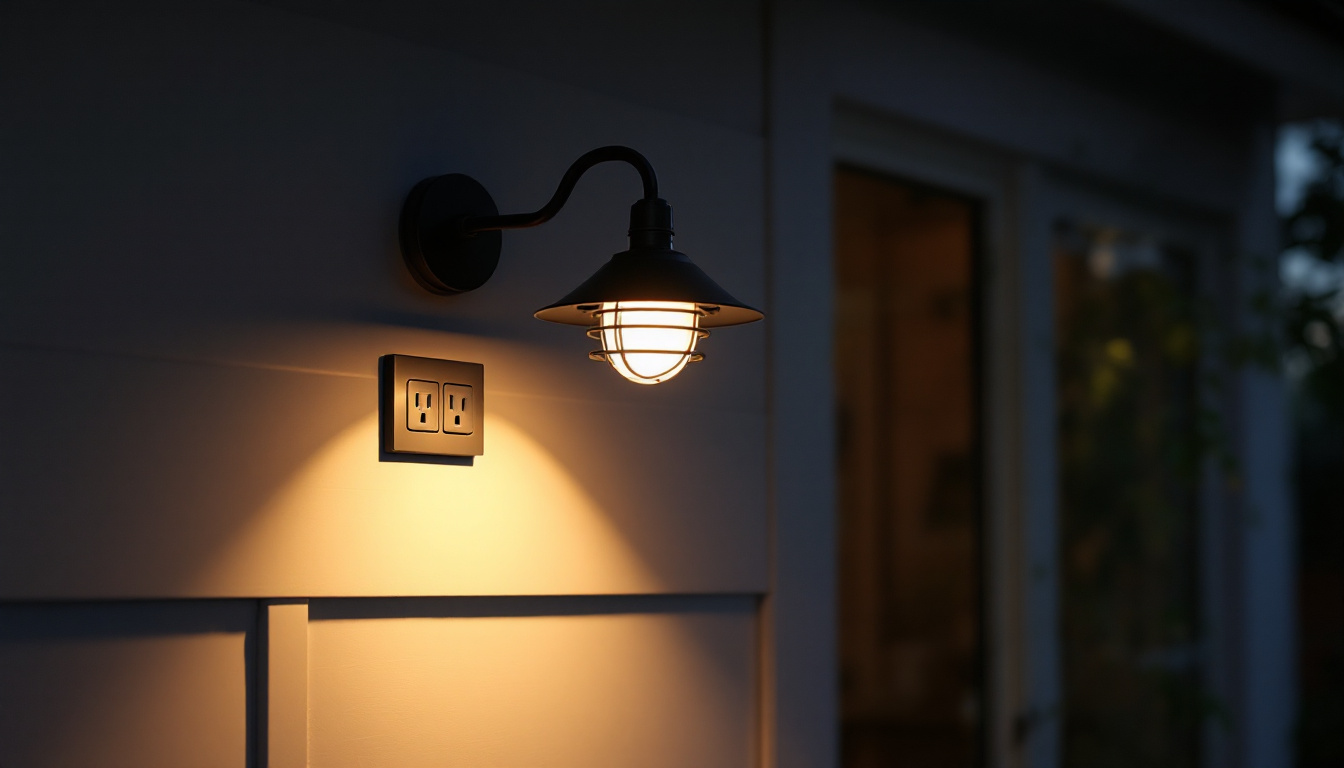
In the world of lighting and electrical contracting, understanding the nuances of various components can significantly impact the success of a project. One such component that often goes unnoticed but plays a crucial role in both functionality and efficiency is the fan speed switch. This article delves into the importance of fan speed switches, their types, and how they can enhance the performance of lighting systems in residential and commercial settings.
Fan speed switches are essential devices that allow users to control the speed of ceiling fans or other ventilation systems. These switches can be found in various forms, each catering to specific needs and preferences. For lighting contractors, a comprehensive understanding of these switches can lead to better installations and satisfied clients.
There are several types of fan speed switches available in the market, each designed to offer different functionalities. The most common types include rotary switches, slide switches, and digital controls. Understanding the differences between these types can help contractors choose the right switch for a given project.
Rotary switches are perhaps the most traditional type, allowing users to turn a knob to adjust the fan speed. They are simple to use and provide a tactile feedback that many users appreciate. Slide switches, on the other hand, offer a more modern approach, enabling users to slide a lever to select the desired speed. Digital controls represent the latest in fan speed technology, often featuring programmable settings and remote control capabilities. These advanced options can integrate with smart home systems, allowing users to control their fans from their smartphones or through voice commands, adding an extra layer of convenience and modernity to home automation.
Adjustable fan speed switches provide numerous benefits that can enhance the overall efficiency of lighting systems. One of the primary advantages is energy savings. By allowing users to adjust the fan speed according to their needs, these switches can help reduce energy consumption, leading to lower utility bills.
Additionally, adjustable switches contribute to improved comfort levels. In spaces where temperature control is essential, the ability to modify fan speed can make a significant difference. This is particularly important in larger areas where airflow needs to be managed effectively. For instance, in open-plan offices or spacious living rooms, the ability to customize fan speed can help create a more pleasant environment by ensuring that air circulation meets the specific needs of the space and its occupants. Furthermore, adjustable fan speed switches can also prolong the lifespan of the fan motor by reducing wear and tear, as operating the fan at lower speeds when full power is not needed can lead to less strain on the system over time.
When installing fan speed switches, lighting contractors must consider several factors to ensure optimal performance and safety. Proper installation not only enhances the functionality of the fan but also ensures compliance with electrical codes.
Understanding the wiring requirements for fan speed switches is crucial for safe and effective installation. Most fan speed switches require a specific wiring configuration to function correctly. Contractors must be familiar with the electrical codes and standards in their area to avoid potential hazards.
Typically, a fan speed switch will have multiple wires: one for the power supply, one for the fan, and possibly others for additional features like lights. Ensuring that these wires are connected correctly is vital for the switch to operate as intended. Miswiring can lead to malfunction or even electrical fires, making it essential to follow the manufacturer’s instructions closely.
Moreover, contractors should also take into account the gauge of the wiring being used. Using wires that are too thin can result in overheating and increased resistance, which may compromise the switch’s performance. It’s advisable to consult the manufacturer’s specifications regarding wire gauge to ensure that the installation meets safety standards and operates efficiently.
The location of the fan speed switch can greatly influence its usability and effectiveness. Contractors should consider placing the switch in an easily accessible area, allowing users to adjust the fan speed without difficulty. Additionally, the switch should be positioned away from moisture-prone areas to prevent damage and ensure longevity.
Furthermore, it is important to consider the aesthetics of the installation. The switch should blend seamlessly with the surrounding decor while remaining functional. This balance between practicality and design can significantly enhance the overall appeal of the lighting project.
In addition to aesthetics, the orientation of the switch can also play a role in user experience. For instance, switches should be installed at a height that is comfortable for most users, typically around 48 inches from the floor. This consideration not only improves accessibility but also promotes safety, as users can easily locate and operate the switch without straining. Additionally, contractors might want to consider the use of dimmer switches or smart controls that can be integrated into fan speed switches, offering users more versatility and control over their lighting and ventilation systems.
For lighting contractors, integrating fan speed controls with lighting systems can create a more cohesive and efficient environment. This integration not only enhances user experience but also allows for more advanced control options.
With the rise of smart home technology, many lighting contractors are exploring ways to integrate fan speed controls into smart home systems. This integration allows users to control their fans and lights from a single app or device, offering unparalleled convenience.
Smart fan speed switches often come with features such as scheduling, remote access, and compatibility with voice assistants. By incorporating these advanced controls, contractors can provide clients with a modern solution that enhances their living or working spaces. Additionally, the ability to set specific moods or ambiances through coordinated lighting and fan speeds can transform a room’s atmosphere, making it ideal for entertaining, relaxation, or focused work.
Moreover, the integration of fan speed controls into smart home ecosystems enables automation based on environmental conditions. For instance, smart sensors can detect temperature changes and automatically adjust fan speeds to maintain comfort levels, significantly improving energy efficiency. This level of customization not only appeals to tech-savvy homeowners but also promotes a sustainable lifestyle by reducing unnecessary energy consumption.
Another avenue for integration is with energy management systems. These systems monitor and optimize energy usage throughout a building, allowing users to make informed decisions about their energy consumption. By connecting fan speed controls to an energy management system, contractors can help clients achieve greater energy efficiency and sustainability.
This integration not only benefits the environment but can also lead to significant cost savings over time. As more clients seek eco-friendly solutions, offering integrated systems can set contractors apart from the competition. By providing real-time data on energy usage, clients can identify peak consumption times and adjust their fan and lighting settings accordingly, further enhancing their energy management strategies.
Additionally, the use of energy-efficient fans and lighting in conjunction with these systems can amplify the benefits. For example, LED lights combined with variable-speed fans can reduce overall electricity consumption, making the entire system not only more eco-friendly but also more cost-effective in the long run. This holistic approach to energy management positions contractors as leaders in sustainable design, appealing to a growing market of environmentally conscious consumers.
Even with the best installations, issues can arise with fan speed switches. Being prepared to troubleshoot these problems can save time and enhance customer satisfaction.
Common malfunctions include the fan not responding to the switch, inconsistent speeds, or the switch itself not functioning. Identifying the root cause of these issues is the first step in effective troubleshooting.
If a fan does not respond to the switch, the issue may lie in the wiring or the switch itself. Checking the connections and ensuring that the switch is compatible with the fan model can often resolve the problem. For inconsistent speeds, it may be necessary to inspect the fan motor or the switch’s internal components.
Regular maintenance can prevent many issues associated with fan speed switches. Contractors should advise clients on the importance of keeping the switches clean and free from dust and debris. This simple step can prolong the life of the switch and ensure optimal performance.
Additionally, periodic inspections can help identify potential problems before they escalate. Encouraging clients to report any irregularities promptly can lead to quicker resolutions and greater satisfaction.
In conclusion, fan speed switches are a vital component in the toolkit of lighting contractors. Understanding their types, benefits, and installation considerations can greatly enhance the quality of service provided to clients. By integrating these switches into lighting systems, contractors can offer innovative solutions that meet the evolving needs of modern consumers.
Moreover, being equipped to troubleshoot common issues and provide maintenance advice can further solidify a contractor’s reputation as a reliable professional. As the demand for energy-efficient and user-friendly solutions continues to grow, the role of fan speed switches in lighting projects will only become more significant.
Ultimately, investing time in understanding and implementing fan speed switches can lead to increased client satisfaction, repeat business, and a competitive edge in the lighting contracting industry. Embracing these components not only elevates the quality of installations but also contributes to the overall success of lighting contractors.
Ready to enhance your lighting projects with the best fan speed switches on the market? Look no further than LumenWholesale, where we provide contractors with the highest quality, spec-grade lighting products at unbeatable wholesale prices. Say goodbye to local distributor markups and hello to superior products that meet the highest industry standards. With our hassle-free bulk buying and free shipping, you can trust that you’re getting premium lighting at the best value — without hidden fees or compromises. Elevate your lighting installations today by visiting Wholesale Lighting at the Best Value and experience the LumenWholesale difference.

Discover the ultimate guide to mastering dusk to dawn outdoor lighting with insights from top lighting contractors.

Explore the rising significance of outdoor flood lamps in the lighting industry.

Discover expert insights and best practices for using LED can lights in your projects with our comprehensive guide tailored for lighting contractors.

Discover the essential role of porch lights with outlets in modern lighting projects.